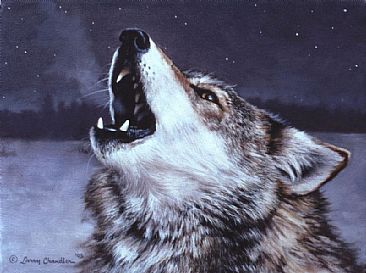|

Website created by: Kelsey K.
This site is dedicated to my wolf Amani and the original members of the
Sawtooth Pack...you will never be forgotten.
World Wide Wolf Updates
Help Protect the Wolves!: Anything
below are things that you can take part in to help the wolves. Weather it be writing a letter or sending emails to different
organizations, everything helps!
Posted: February 05, 2006
Aerial Gunning Allowed!
Under the anti-conservation Board of Game's direction, more than 400 wolves in
Alaska have been killed by the barbaric practice of aerial gunning.
Easy targets against fallen snow, wolves can be gunned
down from airplanes or chased to exhaustion, then shot at point blank range.
A state judge recently ruled that the state
of Alaska’s regulations, upon which their aerial gunning program is based, were illegal, giving wolves a temporary reprieve.
The Alaska Board of Game immediately scheduled an emergency meeting to address the deficiencies the court found. At this meeting,
the Board adopted new regulations, which were filed January 26th. This action allows the state to issue new aerial gunning
permits. Aerial gunners are expected to be operating as early as next week. More than 400 wolves have been killed over the
past 3 winters and the new plans target approximately 400 more.
How can you help?
Click on the link below and the website will give you the
rest of the information needed. You can make a donation or sign a petition to help stop this. After signing, they will allow
you to email a postcard to your friends a family. Every signature helps! Thank you.
Link: Defenders of Wildlife
Posted: February 11, 2006
Call To Action
On January 13, 2006, Idaho Fish and Game's first management action was to announce
their plan to kill 75% of the wolves within the Clearwater National Forest's Lolo district for the next five years. The agency
is blaming wolves for low elk numbers despite overwhelming evidence that habitat conditions are instead limiting those numbers.
While this region once held a high elk population as a result of a major fire, which swept through the Clearwater in 1910
opened up large meadows.
How can you help?
Click on the link below, it will direct you to the page and
full story. Scroll down near the end and they will have the name of the man in charge of this organization and give his email.
You can also attend the meeting if it is close to where you live or send a written letter to the address given. They post
an example letter that you may use, but your own words will have more effect! Thank you.
Link: Help Stop This Action...
Wolves in the News: Anything below
are articles that have to do with wolves, like wolf recovery or things that are happening around the world with their species
Posted February 11, 2006
DNR to survey Lower Peninsula Gray Wolf Population
The state Department of Natural Resources begins a survey Monday to look for gray
wolves in the
northern Lower Peninsula.
Officials say the Upper Peninsula is home to at least 400 wolves, which began returning
to the U-P from Canada and Wisconsin in the early 1990s.
After the accidental killing of a wolf in Presque Isle County in 2004, the DNR
confirmed at least two gray wolves in the northern Lower Peninsula in 2005.
Through March 10, survey teams will look for wolf tracks in predetermined areas
and in areas where wolf sightings have been reported.
The DNR is asking anyone who sees a wolf or possible wolf tracks preserve evidence
or take photos.
Posted August 2, 2006
The Battle For Wolf Survival - Reality vs Perception - Politics vs Science
Report: Most Montana cattle losses in '05 not due to predators
Reported
on May 5
By BECKY BOHRER of the Associated Press
BILLINGS - Montana
ranchers lost 66,000 cattle - valued at nearly $42 million - to predators, disease and other causes last year, a federal report
issued Friday shows.
Most of the losses, 63,000 head worth $40 million,
were not due to predators, the report from the National Agricultural Statistics Service found. That was also true nationally.
Of the 3,000 head killed by predators in Montana,
2,400 were calves. Coyotes were the greatest cause of calf losses by predators, responsible for killing 1,300, the report
found.
The report didn't specifically break out wolves
in the individual state summaries, but attributed a fraction of the 190,000 cattle killed by predators nationally - 4,400
head - specifically to wolves. Nationwide, ranchers lost 4.05 million cattle to all causes, the report showed. Those figures
do not include Alaska, it said.
The report, based on surveys with farmers and
ranchers, is released every five years, said Peggy Stringer, director of Montana's branch of the statistics service.
Agency figures show there were 2.4 million head
of cattle in Montana, as of Jan. 1, 2006.
The paper also details nonlethal measures used
by producers in efforts to keep predators at bay. It found a broad spectrum of practices on Montana operations, ranging culling
and frequent checks - each used by more than 31 percent of cattle ranchers - to use of special fencing and guard animals and
"fright tactics."
Nationwide, producers spent $199.1 million on
nonlethal control practices, the report said.
Janelle Holden, executive director of the Predator
Conservation Alliance, said she's seen interest in nonlethal methods grow in recent years, particularly as the region's wolf
population also has grown. More than 1,000 gray wolves are estimated to be roaming Montana, Idaho and Wyoming, 11 years after
wolves were first reintroduced to the Northern Rockies.
"I think Montana ranchers are very proactive and
pragmatic," Holden said. "They are willing to understand that these wildlife species are here to stay, and even if they're
not excited about that fact, they have to figure out a way to live with them."
Holden said there's not a one-size-fits-all approach
for farms and ranches when it comes to nonlethal methods, and that it takes a lot of thought on the part of producers to figure
out what works for their specific situation.
The executive vice president of the Montana Stockgrowers
Association was traveling and not immediately available for comment.
|

